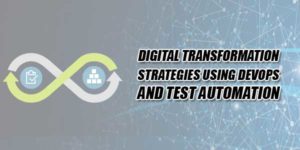
The agricultural industry is being transformed with technological innovations to meet the growing worldwide demand for food. Some technologies revolutionising agricultural practices include the Internet of Things (IoT), which offers new solutions to conventional farm challenges. Merging IoT with modern-day agriculture is opening avenues for sustainable, efficient, and productive agricultural practices, summarised perfectly in the phrase Smart Agriculture System Using IoT.
Table of Contents
What IoT Stands For In Agriculture:
Internet of Things refers to a collection of connected devices that share information through the Internet. IoT agriculture refers to the deployment of sensors, equipment, drones, and tractors in farms to track, collect, and analyse real-time data about soil conditions, plant health, weather, and machine health.
IoT devices allow farmers to make well-informed decisions, conserve resources, and respond promptly to climatic fluctuations. Through this, IoT is transforming traditional farming into a mechanised, data-driven practice, laying the groundwork for a new age of farming that’s more efficient at reduced costs and with reduced environmental impact.
Key Aspects Of IoT-Based Farming:
Certain technology aspects play a critical role in the success of IoT in farming:
Sensors:
Soil temperature, soil moisture, pH, and nutrient content are sensed by sensors. Sensors are planted in the ground or fitted on plants and send data to a central point in real time.
IoT-Enabled Devices:
Data is sent and received by weather stations, drones, and irrigation controllers. They provide real-time data to farmers so that they can respond in time and effectively.
Connectivity and Communication:
IoT sensor readings are received over wireless networks such as LoRaWAN, NB-IoT, or cellular. Simple communication protocols allow data transmission even in remote locations on farms.
Cloud Computing and Analytics:
Cloud platforms analyse and process data. Machine learning-based predictive crop disease algorithms can predict disease and offer actionable recommendations.
Mobile and Web Apps:
User interfaces such as dashboards or mobile apps allow farmers to manage and monitor remotely with ease by a series of clicks of the mouse, irrigation or fertilisation.
Applications Of IoT In Agriculture:
Applications of IoT in agriculture are various, and they stretch across all the stages of the lifecycle of agriculture:
Precision Farming:
IoT makes precision agriculture possible as farmers can make adjustments using real-time information. Variable rate technology (VRT) is one example, which provides differential levels of fertiliser or pesticide based on the specific need of a section of a field.
Smart Irrigation:
IoT sensors that measure water levels in the soil and weather conditions automatically render irrigation systems intelligent so that crops receive water only when necessary. This saves water, lowers energy usage, and avoids overwatering.
Livestock Monitoring:
IoT sensors implanted on farm animals can monitor health parameters such as body temperature, activity, and feeding patterns. Early detection of health helps in early treatment and fewer deaths.
Greenhouse Automation:
IoT devices can be used to regulate temperature, humidity, and light in greenhouses on an automatic basis. The systems improve the best growth conditions and reduce human efforts.
Crop Management and Disease Detection:
Image recognition software integrated into drones or cameras can identify diseases or pests in crops. Through AI, the software will diagnose the issue and suggest a remedy for it, reducing crop loss.
Advantages Of IoT In Agriculture:
Agri-IoT has several advantages:
Efficiency Improvement:
Process automation, like irrigation, fertilisation, and pest control, minimises work and effort.
Optimisation of Resources and Time:
Farmers can utilise their time and resources to the maximum.
Enhancement of Quality and Yield:
Data-driven decision-making results in increased planning and management of crops, resulting in increased yields and product quality.
Efficient Utilisation of Resources:
IoT makes water, fertilisers, and energy usage highly efficient. Waste and environmental degradation are kept to a minimum through precision application.
Risk Minimisation:
Early detection of diseases, weather, and equipment breakdowns allows for early action and reduces the likelihood of suffering severe losses.
Cost Savings:
While IoT technology is costly to buy in large quantities, the economic savings through resource conservation and productivity improvements in the years to come outweigh the cost.

Challenge to IoT adoption in Agriculture:
Despite numerous benefits, there are a few challenges that have limited IoT’s wide adoption in agriculture:
Unnecessarily High Initial Costs:
Small-scale farmers cannot afford the cost of IoT devices, connectivity, and analytical software.
Connectivity Constraints:
Internet infrastructure and network availability are weak in remote or far-off locations that could impede real-time data transmission.
Data Privacy and Security:
The vast amount of data generated can be a privacy and security concern. Data storage and transport have to be secure.
Technical Competence:
Farmers may lack the technical expertise to install and run IoT systems. Training and support services would be required for the implementation to work.
The Future of Smart Agriculture:
As technology evolves, the application of IoT in agriculture will be even more imperative. Development in AI, machine learning, and edge computing will further advance IoT systems. Governments and institutions are increasingly becoming engaged with AgTech projects because they realise innovation has a stake in food systems in the future.
The concept of a Smart Agriculture System is the perfect combination of data, automation, and sustainability. IoT can be used to enable the agricultural industry to address some of the largest issues of the industry, from climate change to the shortage of manpower.
Conclusion:
IoT is revolutionising the agricultural world to smarter and more efficient agriculture. Real-time data from IoT, predictive analytics, and automation enable farmers to make informed decisions, optimise operations, and boost crop productivity. Long-term benefits of using IoT in agriculture cannot be matched with existing challenges such as cost, connectivity, and expertise. Not only digital but also smart, green, and networked is the future of agriculture.

 About the Author:
About the Author:















Be the first to write a comment.